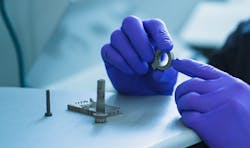At the Four-Front of a Revolution: Decarbonizing the Aerospace Industry
From the inception of aviation with the Wright brothers, navigating through the jet age, and witnessing the expansion of commercial flights to the current strides in commercial space travel, the journey has transformed the once extraordinary into a commonplace occurrence of putting people in the sky.
When it comes to aircraft, the progression from the inaugural flight to ensuring flight safety and the subsequent widespread accessibility of airborne travel resembles three distinct revolutions. Presently, the industry is earnestly pursuing a fourth revolution – that of decarbonization.
Our sector’s contribution to greenhouse emissions is significant. Despite improvements (modern aircraft boasting a unit consumption [per passenger. km] five times lower than those built in the 1960s), the commitment to curbing global warming remains paramount.
Our sizeable impact on global warming cannot and has not been ignored. We have recently seen a tangible commitment at the governmental level to decarbonize aerospace. In April of this year, the UK government unveiled a two-year plan aimed at expediting the design and manufacturing of zero-emission aircraft. Meanwhile, in France, as part of the comprehensive France 2030 investment program, President Macron allocated 1.2 billion Euros to R&D activities focused on reducing the environmental impact of aircraft and related products.
This impetus extends beyond national boundaries, with organizations like the International Civil Aviation Organization (ICAO) championing the cause through initiatives such as CORSIA (Carbon Offsetting and Reduction Scheme for International Aviation). Set to become mandatory in 2027, CORSIA aligns with ICAO's ambitious goal of achieving complete sector decarbonization by 2050. Similarly, CORAC, an organization representing France, sets its sights on the "aviation of the future," pledging its commitment to decarbonization by 2035. This robust support from both governmental and organizational fronts provides a clear roadmap and the financial backing necessary for the industry's pursuit of a decarbonized future.
At JPB Systeme, our innovation and ambition in the field of Metal Binder jet printing (MBJ) has received recognition in the form of funding via the previously mentioned France 2030 initiative. This financial support is actively contributing to the development of a pilot manufacturing line dedicated to creating and pre-industrializing aerospace parts for low-carbon aircraft.
While sustainable fuels and innovative aircraft designs take center stage in achieving decarbonization targets, the role of 3D printing/additive manufacturing technology is not to be understated. Among numerous strategies supporting the broader goal, this technology reduces both raw material consumption and component weight, presenting significant environmental benefits across aerospace parts manufacturing and aircraft decarbonization. Consequently, MBJ will be a focal point of our technological advancements in refining production processes in the coming years.
While they have always been dependent on technological innovation, the drive behind man’s accomplishments within aerospace came from a thirst for adventure and exploration, as well as a burning curiosity about what was possible. However, in this Fourth Revolution, the focus has shifted to a fundamental need and duty to instigate meaningful change, ensuring the long-term future of the planet itself.
Damien Marc is President of JPB Système a leading manufacturer of efficiency-enhancing technology solutions for aerospace, aeronautic and other industries, and supplier to the likes of Safran, Pratt & Whitney, GE and Rolls-Royce.
About the Author

Damien Marc
Damien Marc is President of JPB Système a leading manufacturer of efficiency-enhancing technology solutions for aerospace, aeronautic and other industries, and supplier to the likes of Safran, Pratt & Whitney, GE and Rolls-Royce.
